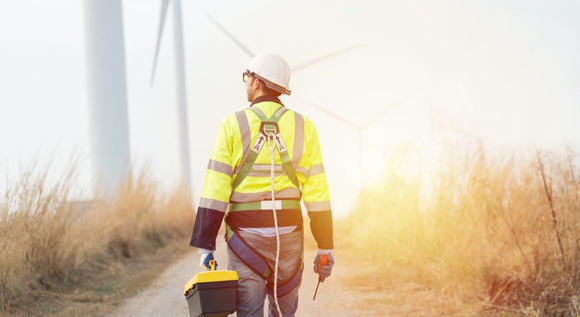Germany tackles the expansion of wind energy
A broad-based strategy is to speed up the pace of the expansion of onshore wind energy. An overview of the key changes.
 © Adobe Stock / amorn
© Adobe Stock / amorn
In 2022, much groundwork was laid to accelerate the expansion of onshore wind energy, which is considered key to the secure and sustainable energy supply of the future. The rising number of new turbines and the considerable increase in approvals for forthcoming wind turbine projects indicate new momentum, but the Federal Government has no intention of relaxing its efforts. (Read more about it in this edition’s ‘direkt finds‘ (in German only). The Onshore Wind Strategy, presented by Federal Minister Robert Habeck at the second summit for wind power at the end of May, is to clear away the final barriers so that Germany can continue to tackle the expansion of onshore wind energy.
At the summit, the topics discussed by the Minister and around 100 representatives of the Federation and the Länder, the wind energy sector, municipalities and environmental associations included the implementation of the strategy. Three issues are considered particularly important in determining the success of the strategy: establishing wind energy as a cutting-edge technology that meets the highest standards, a high degree of investment security for businesses and the best possible policy environment for this, and the readiness of all participants to work towards a successful energy transition.
The focus is on accelerated authorisation procedures, more sites for onshore wind (which should be made available in a timely manner), and sped-up repowering (i.e. replacing older wind turbines with more efficient and economical ones).
The twelve fields of action of the Onshore Wind Strategy
The Onshore Wind Strategy contains a total of twelve fields of action: advancing the expansion of onshore wind energy through the Renewable Energy Sources Act (RES Act), supporting business models not covered by the RES Act, maintaining existing installations and speeding up repowering, mobilising more sites in the short term, simplifying and accelerating approval procedures, making it easier to secure land, strengthening public support, boosting value creation and productive capacities in Germany, securing skilled workers, easing the transport of wind turbine components, furthering technological development, and better aligning the expansions of the electricity grid and wind energy.
You can find more information on the individual fields of action in a detailed PDF on the strategy, which can be downloaded here. Some of the measures that form the strategy are already in implementation. The legal basis for further measures will be put in place this year.

